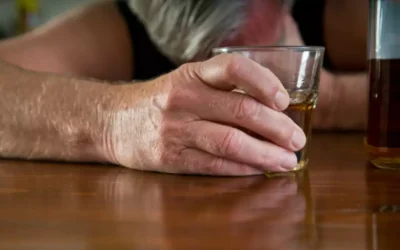
They let Sam know that, no matter what his comfort level being sober around drinkers, you’re not going anywhere. His social life hasn’t magically disappeared because he’s made this decision. It may also be helpful to get to know yourself on your own, first. Spending sober time amphetamine addiction treatment becoming familiar with your body intimately can help you better communicate your needs to someone else when you feel ready for that step. And if a friend or family member is struggling to control their drinking, there are new ways to access support. Ria Health offers medication for alcohol cravings, recovery coaching, support groups, and other powerful tools through a smartphone app.
How to Give Your Friends Honest Dating Advice Without Sounding Like a Jerk
Remember, it’s important to prioritize your well-being and set clear boundaries when socializing with friends who drink. By exploring alternative socializing options being sober around drinkers and developing coping mechanisms, you can navigate these situations while staying true to your sobriety. For more information on building a supportive environment and finding like-minded individuals, read our article on finding your tribe. Building new relationships with individuals who support your sobriety and setting clear boundaries from the beginning can help create fulfilling and healthy social connections. Seeking out peers in recovery and communities dedicated to maintaining sobriety can provide a sense of connection and belonging without the risk of peer pressure. Setting clear and healthy boundaries is crucial for individuals in recovery when navigating social interactions.

Surround Yourself With Supportive People
And decide how long to stay before you even step in the door; you may want to leave before everyone gets buzzed. You’re allowed to have friends and a healthy social life when you’re in recovery. While you may feel it’s challenging to stay sober at social events early on, it’s important to have relationships with others. One of the first steps in navigating social situations while sober is to openly communicate your expectations with your friends. Letting them know about your sobriety and the reasons behind your decision can foster understanding and support. By sharing your journey, you create an opportunity for open dialogue and potentially reduce any potential discomfort or misunderstandings.

The Social Drinkers, Dry Drunks & Sober Alcoholics

Explaining your decision to stay sober and setting limits can help manage expectations and prevent uncomfortable situations. Selecting supportive environments plays a crucial role in maintaining sobriety while socializing. Opt for venues where alcohol is not the central focus or where non-alcoholic options are readily available. This helps reduce the temptation to drink and creates a more comfortable atmosphere for everyone. Hosting your own gatherings or suggesting alcohol-free activities can also help create a supportive environment that accommodates your sobriety while maintaining social connections with friends who drink.
- Try to choose something other than water so that you feel like you are having a treat.
- By setting clear boundaries and communicating your needs, you can navigate social situations while staying true to your commitment to sobriety.
- Engaging with support groups before and after events for encouragement helps maintain sobriety.
- When planning outings with friends, consider exploring options such as coffee shops, tea houses, juice bars, or restaurants that offer a wide range of non-alcoholic beverages.
Studies have looked exhaustively at possible reasons why people relapse and the life of sobriety that most previous users live in order to draw the inference. According to research, individuals who quit alcohol without any form of professional or medical help were more likely to relapse within 3 years. While a sober life is undoubtedly better than a drunk one, that doesn’t mean it is an easy path to walk for someone suffering from alcoholism. These individuals need maximum support in order to succeed.
- Through accountability and commitment to the 12 steps, each client will develop the tools to create a sober lifestyle and find lasting recovery.
- The alcohol withdrawal timeline is well affected after alcohol detox, and the person in question feels relief from extreme withdrawal symptoms.
- A dry drunk is someone who decides to get sober by going “cold turkey.” This is someone who quits drinking without the help of Alcoholics Anonymous, rehab centers, nurses or friends.
- It’s everything you’d imagine a big family gathering to be.
- Surrounding yourself with a community of friends who respect your sobriety can play a vital role in maintaining social connections without compromising your commitment to being sober.
Studies show that the use of naltrexone can help people in recovery maintain sobriety and avoid drinking relapses. The US Food and Drug Administration has approved a long-acting, injectable form of the medication (branded as Vivitrol) for alcoholism treatment. The Substance Abuse and Mental Health Services Administration (SAMHSA) defines detoxification as a set of interventions for managing withdrawal and acute alcohol intoxication.
- The recovering person has a responsibility to take care of themselves, but family and friends can definitely help.
- Having a non-alcoholic drink in hand discourages people from proposing alcoholic beverages, simplifying your refusal.
- That’s six hard, beautiful, glorious years during which I not only stopped drinking, but also finally moved on from all recreational drugs as well as a history of bulimia.
- So, a bit like we’re learning to do in the audios when we’re letting go of our thoughts, you’re learning to do a similar thing with alcohol in the real world around you.
- Seeking out peers in recovery and communities dedicated to maintaining sobriety can provide a sense of connection and belonging without the risk of peer pressure.
